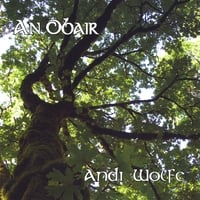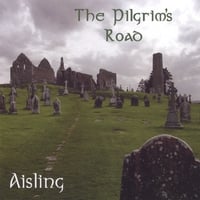 At last, the day of departure arrived and we loaded all our gear and ourselves into a bus for the ride to the airport. Once we got there it was sheer chaos as the porters all wanted to grab our gear for the transfer into the terminal. Everyone wants a tip - the outside porters and the inside porters.
At last, the day of departure arrived and we loaded all our gear and ourselves into a bus for the ride to the airport. Once we got there it was sheer chaos as the porters all wanted to grab our gear for the transfer into the terminal. Everyone wants a tip - the outside porters and the inside porters.Even though Babu Sherpa had organized everything, we were still hit up for tips by everyone and his brother.
 After getting our boarding passes, we went through a security screening where the guys went in one line and the ladies in another. It's very different from TSA procedures - a bit of questioning, a thorough search of carry on, a pat down. However, they don't care about you carrying on a water bottle that's full. Duct tape, however, is a no-no. We had some last-second reorganization to do. . .
After getting our boarding passes, we went through a security screening where the guys went in one line and the ladies in another. It's very different from TSA procedures - a bit of questioning, a thorough search of carry on, a pat down. However, they don't care about you carrying on a water bottle that's full. Duct tape, however, is a no-no. We had some last-second reorganization to do. . .The planes that fly to Lukla are small turboprops that seat about 16 passengers. There are weight limitations on gear and it's a pretty wild ride. It seems so strange to just be standing around the plane, waiting for the previous passengers to disembark and for the transfer of gear and supplies. I have other pics posted - you'll have to follow the link to my "Lukla to Phakding" album to see them.

Eggs that were loaded onto the plane - for us to eat during the trek? Maybe they were heading to Lukla to be used in one of the tea houses.

This is our sardine can, I mean airplane. There were no restrictions on using electronic devices and you had to put your gear on your lap. I think you can discern that it was pretty cozy in there, not to mention very LOUD! The flight attendant passed a basket with cotton balls that you were to put into your ears. I had some of my shop earplugs to wear - 90 db reduction in noise, and it was still LOUD!

I had a window seat right under the wing. I had to crouch down to see anything on the horizon, but I was rewarded with my first glimpse of Mount Everest shortly before we landed in Lukla. Everest is the tallest peak there on the right, flanked by Lhotse and Nuptse. These would become familiar friends during our trek.

This was the sight that greeted us upon arrival at the Lukla airport. It's hard to describe the arrival except to say it's quite an experience.

Here's a link to a YouTube video that shows the landing and take-off of four different planes within the span of four minutes. The runway is uphill and very short. It takes about 10 seconds to travel the distance of the runway before the plane makes a sharp right turn. Once you're there you have to get off the plane and your gear is unloaded very quickly so the next group can load up and take off.
As soon as we got through the airport terminal, our trek was underway. We walked through the first part of the village, regrouped at a guest house for tea while the Sherpa staff was being organized, and then we headed up the trail toward the Solukhumbu region and Sagarmatha National Park.

The first lesson I learned about trekking is to watch your step! This is yak dung and you'll find it everywhere - especially on the easiest track up or down a steep slope. Sometimes it's accompanied by horse dung.

Lukla is stretched out along the trail for quite a ways. Near the airport you'll find all the tourist shops. As you get farther away from the airport you start to encounter village life at a less frantic pace.

The lower elevations of this trail are where you'll find the agricultural regions. It's beautiful. The whole region is breathtakingly stunning. I couldn't absorb it all, there was just so much to see.
 The one constant throughout the trek, aside from yak dung on the trail, was the heavy traffic of porters, yak caravans, trekkers, and locals walking. Porters have to be amongst the hardest working and strongest people in the world. I'm totally amazed at the loads they carried. The T-shaped walking sticks are used for balance and for resting the packs on while they take a break.
The one constant throughout the trek, aside from yak dung on the trail, was the heavy traffic of porters, yak caravans, trekkers, and locals walking. Porters have to be amongst the hardest working and strongest people in the world. I'm totally amazed at the loads they carried. The T-shaped walking sticks are used for balance and for resting the packs on while they take a break.Yaks wear bells that became our ambient sound while trekking.

The path is sprinkled with stupas, prayer wheels, mounds of prayer stones, and prayer wheels. These are sacred sites and you should always pass them in a clockwise direction, so passing the site on the left (with the item to your right) is the correct way to proceed.

Prayer wheels are inscribed with prayers and are spun in a clockwise direction.

Some of them are very colorful and some have a chime or bell that rings as the wheel completes a turn. This is Pasang Sherpa, one of our trail sherpas, showing me how to properly spin a prayer wheel. There's usually a handle at the base that can be used for leverage.

I spent a lot of time taking photographs of plants along the trail - this is wild strawberry.

Primroses were a pretty constant companion, even up into the alpine zone. I read somewhere that there are 48 species of primrose in the Solukhumbu region.

Our first major break of the day was at lunchtime. Our kitchen staff arrived to a tea house early and prepared our lunch. Trail sherpas and kitchen staff worked together to serve out the food.
From day one of the trek it became obvious that we were in good hands. Mountain Tribes was our trekking outfitters and the staff they provided was absolutely amazing.

Lunch was a refreshing break, but we still had another three or four hours of walking ahead of us to our evening stop.
I got a kick out of the juxtaposition of traditional Sherpa buildings with the satellite dish there in the background.

This particular porter's pack had Steve's and my duffel bags. I felt sorry for the guy who was carrying this load. Our duffels collectively weighed about 100 lbs at the beginning of the trek. We had packed a lot of energy bars, cough drops, and other food stuff for later in the trek when we knew we would lose our appetites.

This was one of many suspension bridges we crossed over the next two weeks. Some were long and high above the river, very windy with lots of motion.

Clouds started to gather over the valley in the late afternoon and, eventually, we were in the rain just before we finished walking for the day.
 Our rest stops were usually where we collected everyone together again. Our lead trail sherpa was Tendi Sherpa. He carried a backpack with an orange rain fly and you were not to get in front of him.
Our rest stops were usually where we collected everyone together again. Our lead trail sherpa was Tendi Sherpa. He carried a backpack with an orange rain fly and you were not to get in front of him.We had another couple of staff members walking in the middle and Pasang Sherpa usually was the one at the back to make sure no one was left behind. The first couple of days we stayed together pretty well, but after that we usually had a fast group, a middle group, and the "slow" group. That usually included me since I was stopping to take pictures of plants along the way. A couple of days it included me because I was ill and was having a very difficult time with an upper respiratory infection in thin air (I'm still trying to get over it three weeks after the end of the trek).

We followed the Khumbu river all the way to its source, the Khumbu glacier. The pictures from the higher reaches show an awesome landscape and I'm looking forward to sharing those pictures on my blog.

Our first campsite was at a tea house in Phakding. I think you can tell from the faces of some of my fellow trekkers that the first day's walk was a bit tiring. However, it's worth noting that we had a net loss of elevation from Lukla and the next day's trekking would include a climb of about 3,000 feet - all in one hill up to Namche Bazar. That will be my next post to the blog.
More pics from this day can be found by following this link to my "Lukla to Phakding" album.











No comments:
Post a Comment